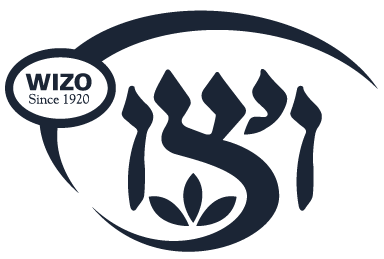
In the early 1970s, plane-hijackings and terrorist actions were directed against Israeli targets in Israel and abroad. The massacre of 11 Israeli athletes by Palestinian terrorists took place at Munich Olympics in 1972 and rocked the Jewish world.
On October 6, 1973, the Egyptian and Syrian armies mounted a surprise attack on Israeli forces in Sinai and the Golan Heights, starting the devastating Yom Kippur War.
The early half of the decade also witnessed the first large wave of Soviet Jewish immigration, marking the success of the “Let My People Go” campaign for the Jews of Silence.
In 1976, the heroic IDF Entebbe Operation rescuing hijacked passengers in Uganda captured the imagination of the world.
An Israeli-Egyptian Peace Treaty was signed in 1979, and Sinai was returned to Egypt.
In the midst of the turbulent times, WIZO continued to meet the needs of the nation, founding new programs and expanding existing ones.

WIZO Milestones
1970 – WIZO marks its 50th anniversary at the 16th World WIZO Conference. Raya Jaglom is elected the 3rd President of World WIZO.
WIZO begins activities in Air Force bases with clubs for Air Force wives and women serving in the corps.
1971 – The first annual WIZO summer camps are organized in WIZO institutions for 5,000 children from development towns, border settlements and deprived neighborhoods.
1972 – The Knesset passes Alimony Law at the initiative of WIZO Israel’s Department for the Status of Women.
(In the photo: Aya Dinstein, chairwoman of World WIZO and Golda Meir, Prime Minister of Israel, award merit scholarships to students of the WIZO France School.)
The WIZO Neri Bloomfield College of Design and Teacher Training in Haifa, sponsored by Hadassah-WIZO Canada, opens with four tracks:
- Photography, graphics and interior design
- School of Education for Training Teachers
- Advanced study and qualifying courses for teachers
- Vocational retraining for new immigrants
The First International Aviv Seminar in Israel is organized by Rachel Limon, Head of the World WIZO Organization Department, to educate future leadership for WIZO and Jewish communities around the world.
1973 – During the Yom Kippur War, all WIZO centers are turned into civil defense bases.
Members volunteer assistance to soldiers and their families. Beit Heuss becomes a branch of Tel Hashomer Hospital for the rehabilitation of wounded IDF soldiers who lost limbs. WIZO Israel’s Department for Bridging the Social Gap, later the Department for Family and Community Welfare, opens led by Rachel Ben-Ezer.
During the brutal Yom Kippur War, all WIZO centers are turned into civil defense bases.

1974 – WIZO branches are opened in new civilian settlements (previously Nahal military outposts) in Sinai and the Golan Heights. Keren Hachavera (Members Loan Fund) set up at the initiative of Rachel Kagan.
1975 – Jerusalem Baby Home, sponsored by British WIZO, expands its activities, becoming a family center and adding a vocational school for girls.
WIZO sends a large delegation to the UN Women’s Year Conference in Mexico, which struggles against anti-Zionist tendencies.
First WIZO clubs for Druze women open in the villages of Daliat Al-Carmel and Peki’in.
(In the photo: Tova Ben Dov at the opening of the WIZO women’s club center in Peki’in.)
1976 – WIZO’s first center beyond the Green Line opens in Hamra in the Jordan Valley, eventually named in honor of WIZO Israel Chairperson Hanna Levin.
Israel Prize for life’s work in volunteering is awarded on Israeli Independence Day to WIZO Metulla Chairperson Esther Levit.
1979 – WIZO Immigrant Absorption Department initiates annual competition for school children: “I Befriended an Immigrant Child.” A prize-award ceremony is held at the Knesset.


